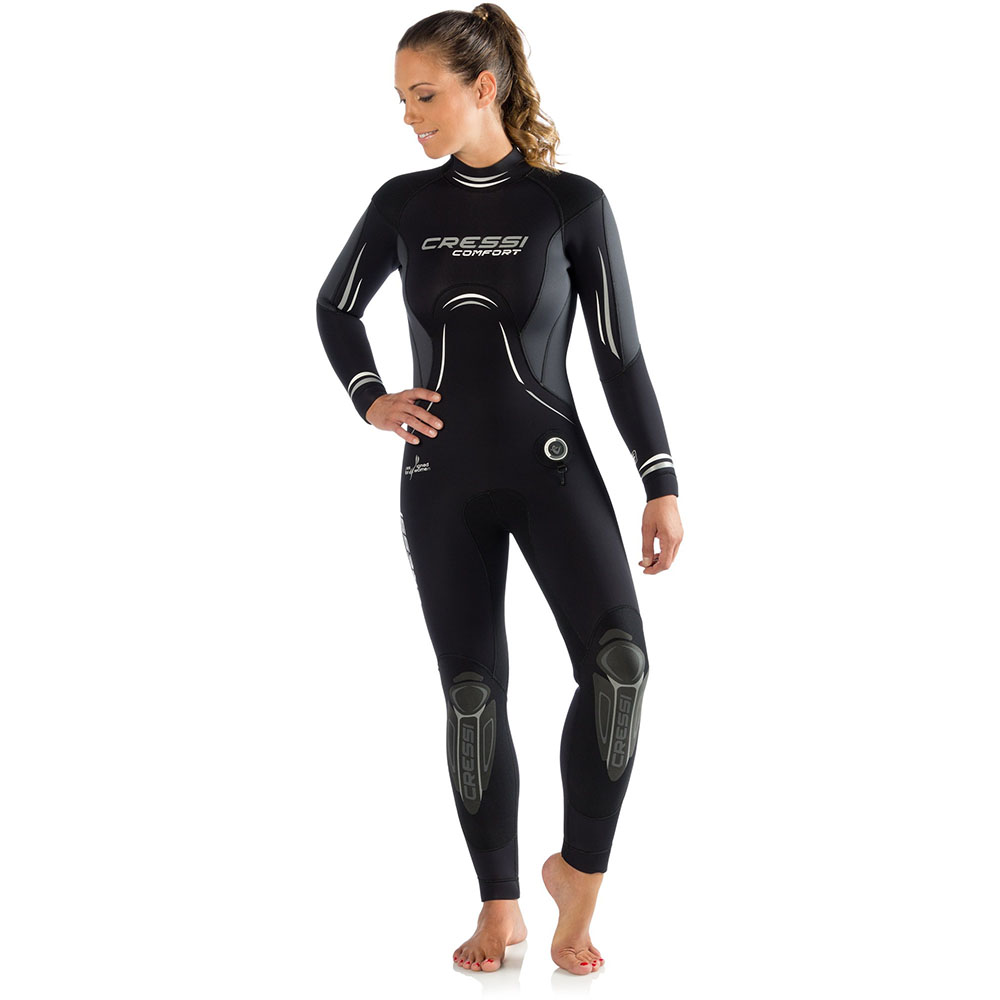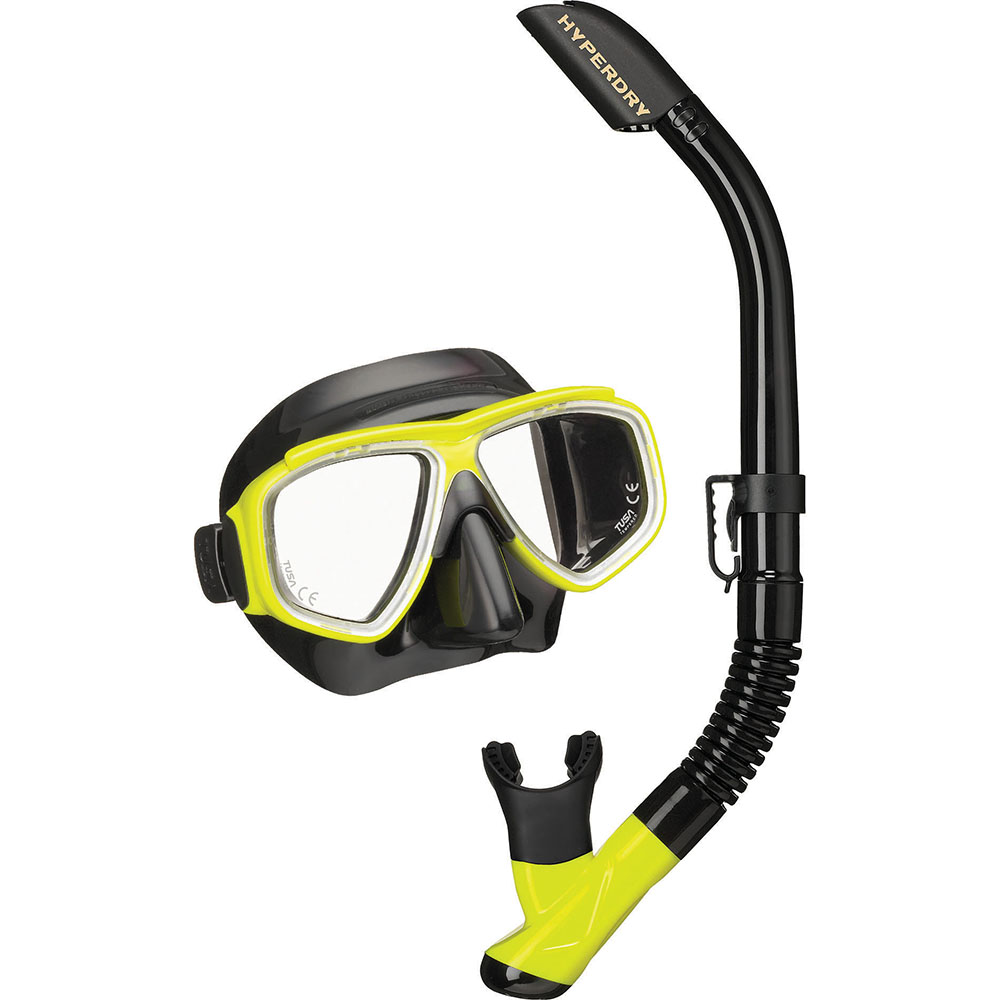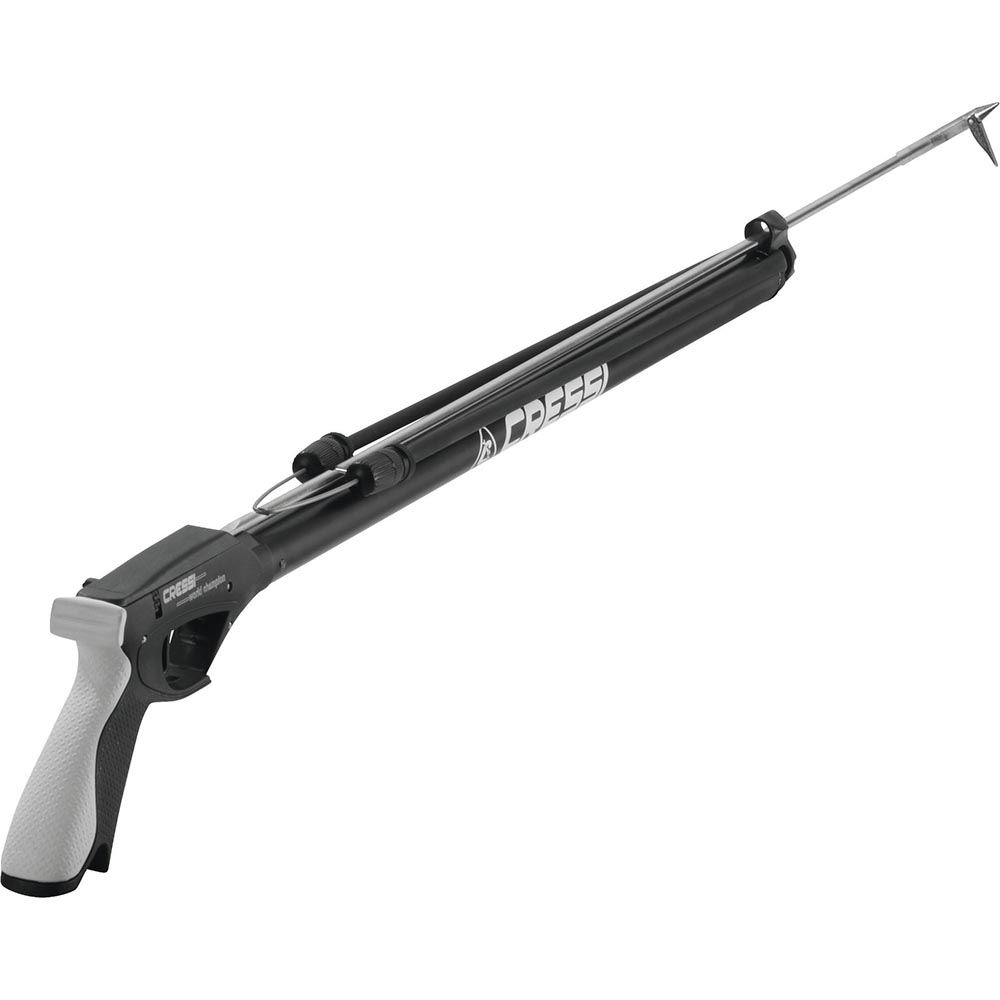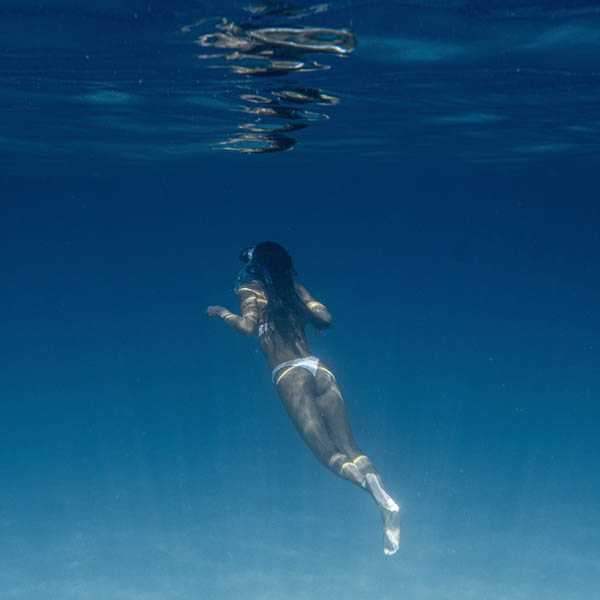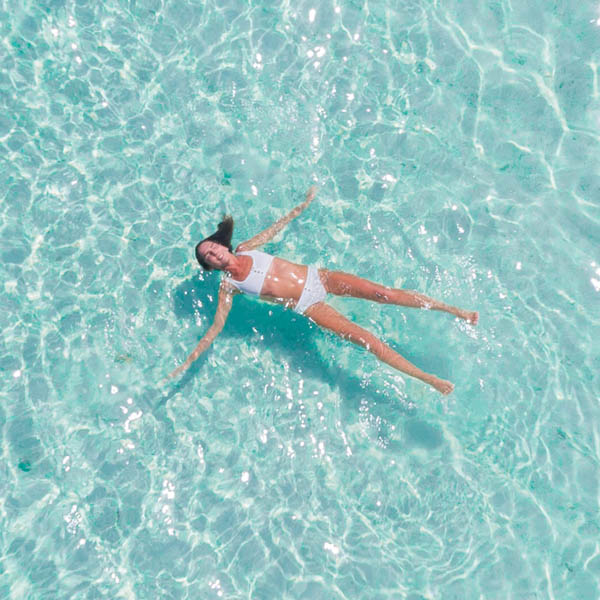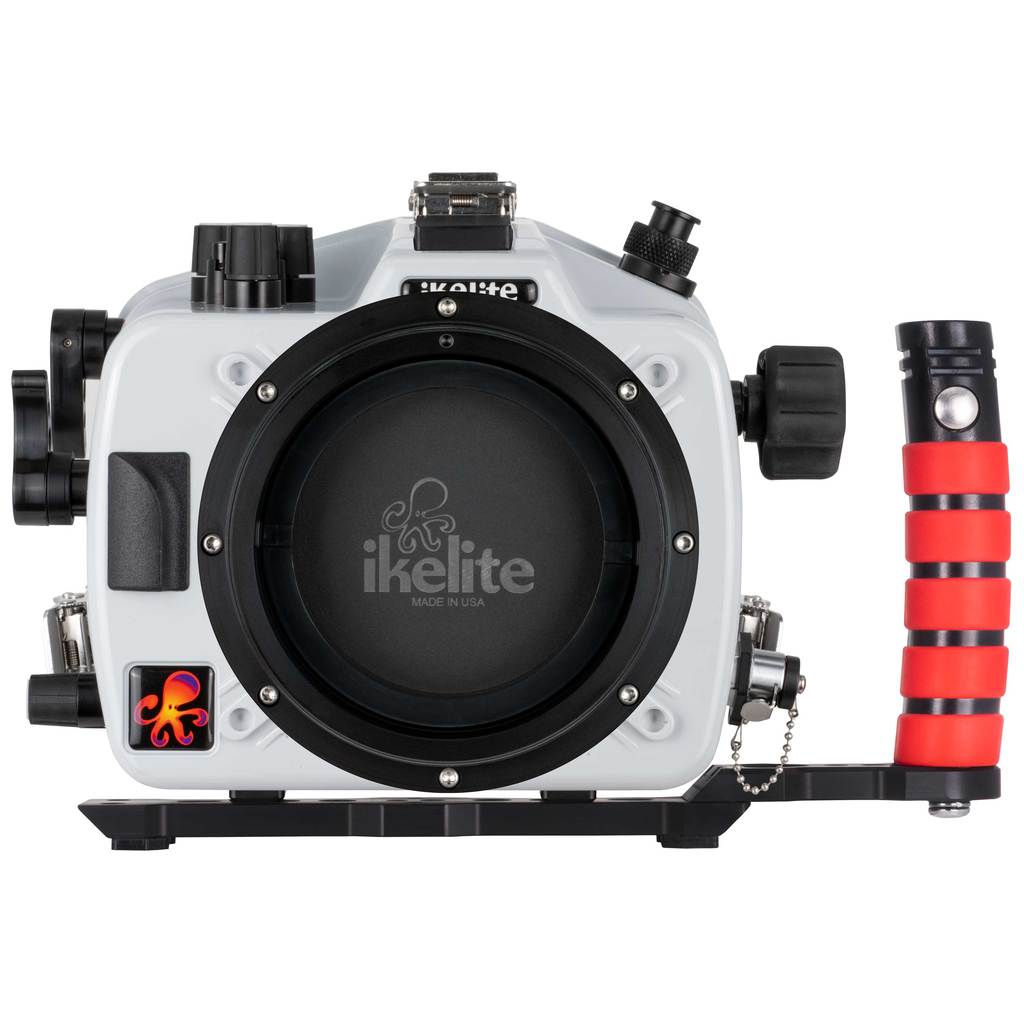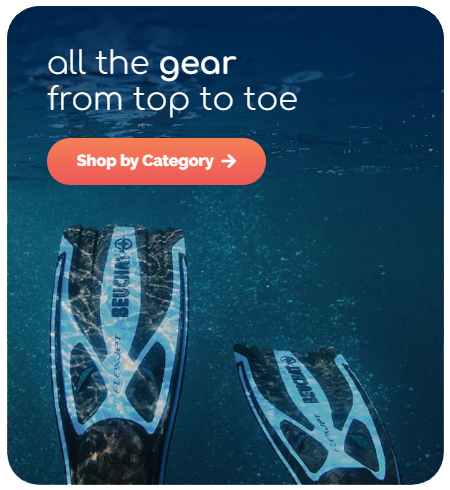Would you like to know more about how to use your product and look after it? We are only a phone call away (07 4099 6243) and happy to help! Or simply jump to our FAQs and find lots more practical information on our products, care and maintenance instructions, user guides and answers to all your questions.
Masks
Why does my nose hurt when I wear a dive mask
- Mask Size and Fit: The mask might not be the correct size or shape for your face. If it is too tight, it can press against your face, causing discomfort or pain. The strap has to be horizontal behind your head, if you pull it up at an angle, this might cause pain under your nose.
- Equalization Issues: As you dive deeper, pressure increases. To maintain comfort and prevent barotrauma, you need to equalize the pressure in the air spaces in your body (like your ears and sinuses) with the outside pressure. This is usually done by pinching your nose and gently blowing against it (the Valsalva maneuver). If you’re not equalizing properly or frequently enough, pressure can build up and cause pain.
- Mask Squeeze: This is related to the previous point and can occur when a diver descends and doesn’t equalize the air pressure inside the mask. The increasing pressure outside the mask can cause it to press harder against the face, leading to discomfort or even bruising and bloodshot eyes in severe cases.
- Pre-existing Condition: If you have a sinus infection, nasal allergy, deviated septum, or any other condition that might make your nose or sinuses sensitive, wearing a dive mask could exacerbate these issues.
- Nose Pocket Irritation: The nose pocket of the mask, where your nose sits, might be irritating the skin on your nose, causing discomfort or pain.
6 effective methods to prevent your diving mask from fogging up
- Pre-dive Cleaning: Often, the fogging issue arises due to the presence of a thin layer of silicone on the mask’s lens, a residue from the manufacturing process. Before using the mask for the first time, scrub the lens with toothpaste or a soft abrasive, rinse thoroughly, and let it dry.
- Use Anti-fog Solutions: There are commercially available anti-fog solutions that you can apply to your mask. After application, you should rinse it lightly so as not to remove the product entirely. Be sure to follow the instructions on the packaging.
- Saliva Technique: A popular method among divers is to spit into the mask lens, then rub it around and rinse it out. Saliva acts as a natural anti-fogging agent.
- Proper Fit and Water Temperature: Ensuring your mask fits well and seals properly to your face is crucial. Warm water causes a mask to fog up more than cold water, so being aware of water temperatures can also aid in prevention.
- Don’t Over-tighten: Over-tightening your mask can cause it to fog up more. Make sure it’s secure but not too tight. Make sure the back strap is horizontal, and not at an angle.
- Avoid Touching: Try not to touch the inside of your mask once it’s been treated. Oils from your fingers can smear the lens and cause fogging.
Remember to take good care of your diving equipment. Cleaning your mask properly after each use can help maintain its longevity and effectiveness.
What is the difference between black or clear silicone dive mask skirts? Which one is better?
The main difference between dark (or black) silicone mask skirts and light (or clear) silicone mask skirts is related to light perception and peripheral vision.
Dark (Black) Silicone Mask Skirts:
-
- Black mask skirts are useful in reducing glare and refracted light. If you are diving in an area with lots of light, such as in clear tropical waters, a black skirt can make it easier to see the underwater world by providing a more focused view.
- They create a sort of ‘frame’ for your vision, allowing you to concentrate more on what’s directly in front of you, much like how cinematographers use dark borders to enhance the viewing experience.
- However, they can reduce the sensation of ‘openness’, which could lead to a feeling of claustrophobia in some divers.
- Black silicone mask skirts are often used by freedivers sand spearfishers.
- Black silicone mask skirts are more resistant to discoloration over time.
Light (Clear) Silicone Mask Skirts:
-
-
- Clear skirts can make the mask feel less claustrophobic because they allow more light in, creating a more panoramic or open view, which can be particularly useful in darker waters or confined spaces, like when cave diving or wreck diving.
- They provide better peripheral vision as light can come through the skirt itself, enhancing your overall visibility.
- On the downside, they can increase glare and cause a distracting amount of refracted light.
- May discolor and take on a yellow tint aver some time.
-
In addition to these functional differences, some divers may have a preference for one over the other based purely on aesthetic reasons. The color of the skirt doesn’t affect the quality of the silicone or the durability of the mask. Both clear and black silicone masks should provide a good seal and be comfortable to wear. The choice between the two ultimately comes down to individual preference and the specific diving conditions. Handy hint: Never store clear and black silicone next to each other over a long time, the black silicone may discolor the clear silicone.
Which mask is suitable for people with large noses?
Number one criteria for buying a scuba diving mask or a snorkelling mask is the correct fit to your facial features. And with this regard, many people only pay attention to the width of their face.
However, in our shop we often come across customers that have no luck with any mask they are trying on, because they have a large nose! Luckily, we stock a few masks, that are particularly suitable for people with large noses!
If you have a large nose, you want to choose a mask with a large nose pocket, to make sure the mask does not hurt your face on the nose bridge and is properly sealing around your cheeks.
We recommend you try a Cressi Mask Quantum, TUSA Mask Freedom HD or the Cressi Ikarus / Itaca Mask and Snorkel Set. Alternatively, and if you are only snorkelling and not scuba diving or freediving, you could try and use a Full Face Snorkel Mask, like a Cressi Duke or a Cressi Baron.
Can I dive with contact lenses?
It is possible for those with vision problems or who wear glasses daily to use contact lenses while snorkeling. It is best to use soft contact lenses, as opposed to rigid gas permeable lenses, as they will better accommodate changes in pressure underwater. However, not all contact lenses are suitable for salt water or deep diving, so it is important to verify with an optometrist.
It is important to consider that ocean water contains a lot of microscopic organisms and bacteria. Wearing contacts while being exposed to salt water can create a breeding ground for these organisms to grow, so it is recommended to use disposable contacts while snorkeling or diving. If you do keep your contacts, make sure to soak them in sterile solution for 24 hours before using them again. Doing this also provides a way to replace contacts if they accidentally get flushed out.
Snorkels
Why should I use a snorkel keeper?
A snorkel keeper is a small plastic clip or strap that is used to attach a snorkel to the side of a diving mask. It is typically made of durable plastic and is designed to hold the snorkel securely in place, preventing it from falling off or shifting during use.
Snorkel keepers are usually located near the top of the snorkel and are designed to fit around the straps of the diving mask. They may be adjustable, allowing the user to tighten or loosen the clip as needed to fit their particular mask or snorkel.
Using a snorkel keeper can be helpful for snorkelers and divers who want to keep their hands free while swimming or diving. By securely attaching the snorkel to the mask, the snorkeler can focus on swimming and exploring without worrying about the snorkel falling off or getting in the way.
Overall, a snorkel keeper can be a simple yet useful accessory for anyone who enjoys snorkeling or diving and wants to ensure a safe and comfortable experience in the water.
Things to consider when buying a kids snorkel
Kids have smaller jaws and therefore shouldn’t use adult snorkels.
When buying a kids snorkel, these are some important factors to consider:
- Size and fit: The snorkel should be appropriately sized for your child’s age and body size. The mouthpiece should fit comfortably in their mouth, and the snorkel should be easy for them to breathe through.
- Comfort: Look for a snorkel that has a soft and flexible mouthpiece, as this will be more comfortable for your child to use for longer periods of time. A comfortable fit will also encourage your child to continue snorkeling and exploring.
- Durability: Kids can be tough on equipment, so choose a snorkel that is made from high-quality, durable materials that can withstand wear and tear. Look for models with reinforced tubes and sturdy clips or straps.
- Safety features: Consider snorkels with safety features like a dry-top design to prevent water from entering the snorkel tube, or a purge valve to help your child clear water from the snorkel more easily.
- Bright colors: Choosing a snorkel in a bright color can make it easier for you to keep an eye on your child while they are snorkeling in the water.
- Price: You don’t need to spend a lot of money on a kids snorkel, but it’s important to choose a model that is good quality and will last for several years
Here at Oceansports, we stock a range of quality mask and snorkel sets that are specifically designed for kids. Check them out here!
How do I clean and maintain my snorkel
Proper cleaning and maintenance of your snorkel can help ensure that it functions properly and remains in good condition over time. Here are some tips for cleaning and looking after your snorkel:
- Rinse the snorkel after each use: After using your snorkel, rinse it thoroughly with fresh water to remove any salt or other debris that may have accumulated inside the tube.
- Soak the snorkel in a cleaning solution: Periodically soak the snorkel in a solution of warm water and mild detergent, such as dish soap. This can help remove any stubborn buildup of dirt, salt, or other debris.
- Clean the mouthpiece and purge valve: Use a soft-bristled brush to clean the mouthpiece and purge valve, if your snorkel has one. This can help remove any buildup of dirt or bacteria.
- Dry the snorkel thoroughly: After cleaning, be sure to dry the snorkel thoroughly before storing it. You can use a towel or air dry it by hanging it upside down.
- Store the snorkel properly: Store the snorkel in a cool, dry place away from direct sunlight. Avoid storing it in a damp or humid environment, as this can encourage the growth of mold or bacteria.
- Check for damage: Periodically inspect the snorkel for any signs of damage or wear, such as cracks or tears in the tube or mouthpiece. Replace the snorkel if you notice any significant damage.
- Make sure you don’t store your clear silicone snorkel next to dark silicone pieces, as discoloration may occur over time.
Is it worth buying a cheap snorkel?
While it ultimately depends on your personal budget, there are definitely advantages to invest in a mod or top range snorkel.
The main differences between a cheap snorkel and an expensive snorkel are typically related to the quality of materials, design, and features.
Cheap snorkels are often made from lower quality materials, such as basic plastic or rubber, which can be less durable and prone to cracking or breaking over time. They may also lack features that are found on more expensive snorkels, such as dry tops or purge valves, which can make them less effective and less comfortable to use.
In contrast, expensive snorkels are often made from higher quality materials, such as silicone or high-grade plastic, which can be more durable and resistant to wear and tear. They may also have more advanced design features, such as flexible or adjustable tubes, ergonomic mouthpieces, and enhanced water-blocking mechanisms.
Additionally, expensive snorkels may offer additional features, such as a purge valve, which allows for easy clearing of any water that may have entered the snorkel, or a dry top, which prevents water from entering the snorkel even in rough water conditions. These features can greatly enhance the comfort and convenience of using the snorkel, especially for more serious or experienced snorkelers and divers.
Overall, while cheaper snorkels may be more affordable, they may not offer the same level of comfort, durability, and convenience as more expensive models.
However, if you are a free diver or a spearfisher, you may not need to invest a lot of money into a dry or semy dry top snorkel, as these snorkels are not suitable for your style of diving. Simple J-Style snorkels will do.
It’s important to consider your needs and preferences as a snorkeler or diver, and to invest in a snorkel that will provide a reliable and enjoyable experience.
What is a snorkel purge valve and how does it work?
A purge valve is a feature commonly found at the bottom of a snorkel that allows a snorkeler or diver to easily clear any water that may have entered the snorkel tube.
The purge valve works by allowing the snorkeler to exhale sharply into the snorkel, which forces any water out of the tube through the valve. The valve typically consists of a one-way flap or mechanism that opens when the snorkeler exhales, and closes when they stop exhaling, preventing any water from entering the tube.
Purge valves are particularly useful in choppy or rough water conditions, where waves and splashing can easily cause water to enter the snorkel. They can also be helpful for divers who are descending or ascending in the water, as pressure changes can sometimes cause water to enter the snorkel.
The purge valve is a simple but effective feature that can help snorkelers and divers to maintain clear and comfortable breathing while in the water.
Here at Oceansports, we stock only the highest quality snorkels, all of them will feature a purge valve, unless you are buying a simple J-style snorkel for freediving or spearfishing.
Check our snorkel range here!
How do dry top snorkels or hyper dry snorkels work?
Dry top snorkels, also known as hyperdry snorkels, feature a mechanism at the top of the snorkel tube that helps to prevent water from entering the snorkel while the diver is swimming or diving on the surface. This mechanism is typically a floating ball or valve that seals the top of the snorkel tube when submerged, preventing water from entering the tube.
When the snorkel is above the water, the ball or valve is not activated and air can easily enter the tube for breathing. However, when the snorkel is submerged, the ball or valve is forced upwards by the pressure of the water, sealing the top of the tube and preventing water from entering.
Dry top snorkels are particularly useful in choppy or rough water conditions, where waves and splashing can easily cause water to enter the snorkel. They also help to conserve energy by reducing the need for the diver to frequently blow water out of the snorkel.
Some dry top snorkels also feature a purge valve at the bottom of the tube, which allows the diver to easily clear any water that may have entered the snorkel. The purge valve can be activated by exhaling sharply into the snorkel, which forces any water out of the tube.
Overall, dry top snorkels or hyperdry snorkels offer a convenient and effective way for snorkelers and divers to breathe comfortably on the surface, while minimizing the risk of water entering the snorkel tube.
Here at Oceansports, we sell a large range of top of the line dry top and hyper dry snorkels by TUSA and Cressi.
Check them out here!
What type of snorkel do free divers prefer?
Freedivers typically prefer low-volume snorkels, which have a smaller internal volume and require less effort to clear water from the tube. Low-volume snorkels allow the freediver to exhale a smaller amount of air to clear the snorkel, which conserves oxygen and reduces the risk of hyperventilation.
Freedivers also prefer snorkels that are flexible and lightweight, as these allow for a more natural and comfortable fit in the mouth, reducing jaw fatigue during long dives. Some freedivers prefer snorkels with a curved or angled shape, which helps to reduce drag and make swimming more efficient.
Another feature that some freedivers look for in a snorkel is a streamlined design, which reduces drag and makes swimming more efficient. Some snorkels marketed specifically to freedivers may also have a hydrodynamic shape, adjustable length, or other specialized features.
Chech out our bestselling freediving snorkels Corsica free and Corsica
What is a flex snorkel?
A flex snorkel is a type of snorkel that features a flexible section at the bottom of the tube, usually it is made of corrugated silicone. The flexible section allows the snorkel to bend and move with the natural movement of the diver’s head and neck, reducing stress on the jaw and increasing comfort during extended use.
Flex snorkels typically have a semi-dry or dry top valve at the top of the tube, which helps prevent water from entering the snorkel while the diver is swimming or diving. Some flex snorkels also have a purge valve at the bottom of the tube, which allows the diver to easily clear any water that may have entered the snorkel.
Flex snorkels are popular among snorkelers and scuba divers, because they offer a comfortable, ergonomic design that reduces jaw fatigue. Some flex snorkels are straight and some have a slight curve. Why is that? The straight flex snorkel is the preferred option for scuba divers. When they are under water, where they don’t need the snorkel, it simply falls away and does not interfere with the regulator or other breathing equipment.
Snorkelers may prefer the curved version of the flex snorkel, as it bends with the natural movement and thus reduces jaw fatigue.
Check out our Cressi Itaca Ultra Dry Snorkel as an example of a flex snorkel that is suitable for a scuba diver (straight tube).
Check out our TUSA Platina II Hyper Dry for an example of a flex snorkel with a curve, which is great for snorkelers.
Now you know the difference between the curved and the straight flex snorkel, check out our entire snorkel range to find your ideal piece!
Full Face Snorkel Masks
Can I wear glasses under a full face snorkel mask?
This really depends on the design of the full face snorkel mask and the size of your glasses. Some full face snorkel masks have enough room to accommodate glasses underneath, but others may not.
If you wear glasses, it’s important to check the specifications of the particular full face snorkel mask you’re considering and consult the manufacturer’s instructions before attempting to wear glasses with it.
In the case of the Cressi Duke full Face Snorkel Mask, which we mainly stock here at Oceansports, we do not recommend to wear glasses underneath as it may cause discomfort, a poor seal, or water leakage.
If you need corrective lenses, you may want to consider using a more traditional style prescription snorkel mask instead. These goggles have built-in corrective lenses and can provide clear vision while snorkeling without the need for glasses.
Can I dive with contact lenses?
It is possible for those with vision problems or who wear glasses daily to use contact lenses while snorkeling. It is best to use soft contact lenses, as opposed to rigid gas permeable lenses, as they will better accommodate changes in pressure underwater. However, not all contact lenses are suitable for salt water or deep diving, so it is important to verify with an optometrist.
It is important to consider that ocean water contains a lot of microscopic organisms and bacteria. Wearing contacts while being exposed to salt water can create a breeding ground for these organisms to grow, so it is recommended to use disposable contacts while snorkeling or diving. If you do keep your contacts, make sure to soak them in sterile solution for 24 hours before using them again. Doing this also provides a way to replace contacts if they accidentally get flushed out.
How to clean your Full Face Snorkel Mask
Full Face Masks should be rinsed with fresh water after every use.
Your Full Face Snorkel Mask is made from polycarbonate parts. As not to damage or scratch the viewport, never use abrasive cleaners, solvents or detergents. Make sure you avoid any rubbing on the mask, as this could scratch the visor.
Do not use Anti-fog products on your mask. Thanks to the two partitions of your full face mask this is not required. The use of anti-fog gels, sprays or films may damage the visor.
We also recommend you have a quick check on the breathing tube, as sometimes material like grit, sand, or other things floating around in the water could get stuck in there and block the floating object that drives the dry top system. Remove objects from the breathing tube as they could cause an issue with breathing the next time you are using the full face mask.
After rinsing, detach the breathing tube (snorkel) from the mask and leave it to dry in a cool spot. Never leave your mask in the direct sun, as harmful UV rays will destroy the material.
Store and carry your mask with the provided carry bag.
How to use a Full Face Snorkel Mask
When you first use our Full Face Snorkel mask, remove the protective film from the viewport.
Before every use:
- Before you assemble your mask and snorkel, check the sealing ring and make sure it sits neat in its place, then mount the snorkel. If the seal is broken ro displaced, your Full Face snorkel mask will leak.
- Check the upper part of the snorkel to make sure there are no objects (sand, seaweed etc) obstructing the movement of the float.
- Do not carry your mask by the snorkel.
- When you put the mask on your face, make sure the silicone skirts sits correctly on your face and skin, remove all facial hear that could cause the mask to leak.
- Adjusting of the elastic strap at the back of the full face mask: Center the elastic strap on the nape of the neck, then adjust the straps on each side so the face mask seals and feels comfortable on you face.
- Check your breathing, make sure nothing is obstructing the air circulation in the mask during in inhaling and exhaling.
While snorkelling:
- Breath in and out through your mouth or nose.
- The float in the upper part of the breathing tube is designed to prevent water form entering the tube in rough and choppy water conditions or when you dive into the water to have a closer look at your surroundings. Should you get water into the mask, raise your head from the surface so the water flows out of the purge valve at the bottom of your full face mask.
- We recommend you take of the mask and put it back on, if you want to remove water quickly.
- Always check and follow the manufacturers instructions.
Always supervise children when snorkelling with a Full Face Snorkel Mask.
Prescription Mask
Do far sighted people need a prescription dive mask?
When snorkelling and diving, it’s usually easy to spot things from a distance, but if you’d like to experience the smaller details of the underwater world, it’s best to have a dive mask with a prescription for far-sightedness. Though they are not always available in stores, we can help you find one.
I am short sighted, do I need a prescription mask?
People with poor vision may be able to snorkel and dive without using a prescription dive mask if they are in a shallow area such as a bay or lake and look at close things. Depending on the depth of the water, it may be possible to gain up to half a prescription strength without the use of a mask. If you are looking at something far away or you have a strong prescription (over -2), it is recommended to use a prescription dive mask to ensure a better experience.
Can prescription lenses be fitted to a dive mask?
If you don’t prefer wearing contact lenses while snorkelling and diving, you can always invest in a prescription dive mask instead. Some of these masks are specifically made to cater to those with poor vision, but there are also available regular dive and snorkel masks that can have the regular lenses replaced with prescription or optical lenses.
Without exception, these are two-window design masks.
People who need corrective lenses for snorkelling and diving can find options for nearsighted and farsighted vision. These lenses come in a range of strengths, from -1.5 to -8.0 and +1.0 to +4.5 in 0.5 increments. Higher-end models can come fitted with lenses specifically tailored to each eye, and some masks come with factory-installed lenses.
We recommend the Cressi Big Eyes Evolution, TUSA Ceos Freedom, and TUSA Paragon Mask , as these masks are adjustable with optical lenses of different prescriptions. Contact our friendly team for help.
Before you buy a mask with prescription lenses, speak to your optometrist first to determine the best type of correction for you.
BCDs
What type of BCD best suits my diving style?
The type of BCD that is best for the type of diving you want to do depends on a few factors, such as your experience level, the type of diving you will be doing, and your personal preferences. Here are some general guidelines for choosing a BCD based on the type of diving:
- Recreational diving: If you are new to diving or plan to do mostly recreational diving, a jacket-style BCD is a good choice. Jacket-style BCDs are comfortable and easy to use, and they offer plenty of lift capacity for recreational diving.
- Technical diving: If you plan to do technical diving, a wing-style BCD may be a better choice. Wing-style BCDs are designed to be streamlined and provide better control and buoyancy during technical dives. They are also compatible with a range of accessories, making them a versatile choice for technical divers.
- Travel diving: If you plan to do a lot of travel diving, you may want to consider a lightweight, compact BCD that is easy to pack and carry. Some jacket-style BCDs and semi-wing BCDs are designed specifically for travel, and they often feature lightweight materials and a streamlined design.
- Cold water diving: If you plan to do cold water diving, you may want to consider a BCD with a heavier lift capacity, as you will likely be wearing thicker wetsuits or drysuits that will increase your buoyancy needs. A wing-style BCD may be a good choice, as it offers greater control and buoyancy for technical dives in cold water.
Ultimately, the type of BCD that is best for you will depend on your individual needs and preferences. It is important to try on different BCDs and consider factors such as comfort, adjustability, and compatibility with other diving gear before making a decision.
What is the difference between a jacket BCD, a wing BCD and a Semi-Wing BCD?
Jacket-style BCDs, wing-style BCDs, and semi-wing BCDs are the three most common types of BCDs available on the market. Here are the differences between them:
- Jacket-style BCDs: These are the most common type of BCDs and are also known as vest-style BCDs. They feature a jacket-style design with air bladders on the back and sides, providing buoyancy and supporting the diver’s tank. The air bladders wrap around the diver’s torso, making them comfortable and easy to wear. They also have pockets for storing accessories and weights, making them a versatile choice for recreational diving.
- Wing-style BCDs: Wing-style BCDs, also known as backplate-and-wing BCDs, have an air bladder located on the back, which provides lift and buoyancy. The air bladder is typically horseshoe-shaped and is mounted on a metal or plastic backplate. This design allows for more freedom of movement and better trim underwater. Wing-style BCDs are commonly used for technical diving, where streamlined equipment and a greater range of motion are essential.
- Semi-wing BCDs: Semi-wing BCDs are a hybrid between jacket-style and wing-style BCDs. They have an air bladder located on the back, like a wing-style BCD, but they also have a jacket-style air bladder that wraps around the diver’s torso. This combination provides the buoyancy and support of a jacket-style BCD, with the streamlined profile of a wing-style BCD. Semi-wing BCDs are versatile and can be used for both recreational and technical diving.
When choosing a BCD, it is important to consider your diving needs and preferences, as well as your experience level. Jacket-style BCDs are great for recreational diving, while wing-style BCDs are more suitable for technical diving. Semi-wing BCDs offer a balance between the two and are a good choice for divers who want versatility and flexibility in their equipment.
7 Factors to consider before you buy a BCD
When buying a BCD, there are several factors you should consider to ensure that you get the right gear for your diving needs. Here are some things to look out for:
- Fit: The BCD should fit you comfortably and snugly, without feeling too tight or too loose. Make sure to try on different sizes and models to find the one that fits you best. Ig you buy online, make sure you check the availalbe size chart that will give you guidance on how your measurements compare to the sizes available.
- Lift capacity: The lift capacity of the BCD should match your body weight and the amount of gear you plan to carry. The general rule is to have a lift capacity of at least 10% more than your total body weight.
- Weight system: Look for a BCD with a weight system that is easy to use and allows for quick and easy removal of weights in an emergency.
- Material and durability: The BCD should be made of durable materials that can withstand the wear and tear of regular diving. Look for BCDs made of high-quality materials like nylon or Cordura.
- Style: There are different styles of BCDs available, such as jacket-style, back-inflate, and hybrid models. Choose the style that best suits your diving style and preferences.
- Features: Look for features that are important to you, such as pockets for storage, attachment points for accessories, and multiple exhaust valves for easier buoyancy control.
- Brand reputation and customer reviews: Research the brand and read customer reviews to ensure that you are getting a BCD that is reliable and well-suited for your diving needs.
By considering these factors, you can make an informed decision when buying a BCD and ensure that you get a piece of gear that will serve you well on your dives.
Here at Oceansports, we stock all types of BCDs, check them out here!
Dive Socks and Dive Boots
Which type of fins are recommended to be worn with dive boots?
When it comes to choosing fins to wear with dive boots, open-heel fins are the best option. Open-heel fins are specifically designed to be worn with dive boots, which provide additional protection, insulation, and stability while diving.
The key feature of open-heel fins is the adjustable strap that wraps around the back of your heel. This strap allows you to customize the fit and secure the fin in place, even when wearing thicker dive boots. The adjustable strap ensures a snug fit, minimizing the chances of the fins slipping off or becoming loose during underwater activities.
By wearing dive boots with open-heel fins, you can enjoy several advantages. First and foremost, the boots provide thermal insulation, keeping your feet warm in cold water environments. They also offer protection against sharp objects, rough surfaces, and potential injuries while walking on rocky shores or boarding dive boats.
Additionally, the combination of dive boots and open-heel fins offers enhanced stability and control. The boots provide a firm foundation and prevent chafing or discomfort caused by the fin straps rubbing against your bare skin. The added support and comfort allow you to exert more power with each kick, resulting in improved propulsion and maneuverability underwater.
Closed-heel fins, which have a full foot pocket instead of an adjustable strap, are not suitable for use with dive boots. Closed-heel fins are designed to be worn without additional footwear and may not accommodate the extra bulk of dive boots comfortably.
CHeck out our large range of open-heel fins and closed-heel fins here.
Can I wear socks in my dive boots?
Yes, you can wear socks with dive boots. Some divers prefer to wear thin neoprene socks or dive socks inside their dive boots for added comfort, insulation, or to prevent chafing. The socks can help provide a better fit, reduce friction, and protect your feet from potential irritation. It’s important to choose socks specifically designed for diving to ensure they are made from suitable materials that won’t retain excessive water or affect the fit of the boots. Additionally, it’s crucial to ensure that the socks don’t interfere with the proper fit and function of the fins.
Check out our range of dive socks here. They come in different thicknesses, depending on the level of warmth you require.
Wetsuits
Can I wash my wetsuit?
Yes, you can and should wash your wetsuit regularly to keep it clean and maintain its longevity. Wetsuits can accumulate dirt, salt, sand, and sweat over time, and proper cleaning can help prevent odors and damage to the neoprene material. Here’s how you can wash your wetsuit:
- Rinse with fresh water: After each use, rinse your wetsuit thoroughly with fresh water to remove salt, sand, and any debris. This helps prevent saltwater and contaminants from degrading the neoprene.
- Inside-out: Turn your wetsuit inside out before washing. This will allow you to clean the inside, which can also accumulate sweat and bacteria.
- Mild detergent: Use a mild wetsuit-specific detergent or a gentle, non-detergent soap. Avoid harsh chemicals, bleach, or regular laundry detergents, as they can damage the neoprene and seams. Check out our Sharkskin Watersports Wash, this is an ideal wetsuit spefific detergent.
- Hand wash: Fill a tub or basin with lukewarm water and add the recommended amount of wetsuit cleaner or soap. Gently agitate the water to create suds.
- Soak and gently scrub: Submerge your wetsuit in the soapy water and let it soak for a few minutes. Then, use a soft brush or cloth to gently scrub the neoprene, paying attention to any particularly dirty or stained areas. Be careful not to scrub too vigorously to avoid damaging the wetsuit.
- Rinse thoroughly: After scrubbing, thoroughly rinse the wetsuit with fresh water until all soap residues are gone. Make sure to rinse both the inside and outside of the suit.
- Hang to dry: Hang your wetsuit on a sturdy hanger in a shaded, well-ventilated area, away from direct sunlight or heat sources. Avoid folding or wringing the wetsuit, as this can damage the neoprene and compromise its elasticity. Allow it to air dry completely.
- Store properly: Store your wetsuit flat or on a wide hanger to maintain its shape. Avoid hanging it by the shoulders, as this can cause stretching.
Regularly washing and properly caring for your wetsuit can extend its lifespan and keep it smelling fresh. Additionally, it’s a good idea to inspect your wetsuit for any damage or wear and tear, such as torn seams or holes, and repair them promptly to prevent further damage.
Open cell wetsuit and closed cell wetsuit: What is the difference?
The main difference between an open cell wetsuit and a closed cell wetsuit lies in the type of neoprene used in their manufacturing process.
An open cell wetsuit is made with a type of neoprene that has a porous, “open cell” interior. This means that the inside of the neoprene material is exposed and feels soft and plush to the touch. When worn, the open cell neoprene creates a very snug fit against the skin, providing excellent insulation and minimizing water circulation inside the suit. However, the open cell neoprene is delicate and can easily tear if not handled with care. To help put on an open cell wetsuit, lubricants such as soapy water or specialized solutions are often used to assist in sliding the suit onto the body.
On the other hand, a closed cell wetsuit is made with a neoprene material that has a closed, smooth surface both inside and outside. It doesn’t have the exposed, porous interior like an open cell wetsuit. The closed cell neoprene is more durable and resistant to tears and abrasions, making it suitable for rougher conditions. Closed cell wetsuits are often lined with nylon or other materials for added strength and durability. Unlike open cell wetsuits, closed cell wetsuits are easier to put on and take off since they don’t require lubricants.
Both open cell and closed cell wetsuits have their advantages. Open cell wetsuits tend to be favored by experienced divers and freedivers who prioritize maximum insulation and flexibility, while closed cell wetsuits are more commonly used by recreational divers, surfers, and water sports enthusiasts who require durability and ease of use.
Open Cell Wetsuits Pros:
- Superior Insulation: The snug fit of open cell neoprene provides excellent insulation, keeping the body warm in cold water conditions.
- Enhanced Flexibility: Open cell neoprene is more flexible and stretchable, allowing for greater freedom of movement underwater.
- Minimal Water Circulation: The tight seal created by open cell wetsuits reduces water circulation inside the suit, helping to maintain body heat.
- Lightweight: Open cell wetsuits are generally lighter in weight compared to closed cell wetsuits, providing a more comfortable and less restrictive experience.
- Ideal for Experienced Divers: Open cell wetsuits are popular among experienced divers and freedivers who prioritize performance and require maximum flexibility.
Open Cell Wetsuits Cons:
- Fragility: Open cell neoprene is delicate and prone to tearing if not handled with care, making it less durable than closed cell neoprene.
- Difficult to Put On: Open cell wetsuits require the use of lubricants or soapy water to help slide the suit onto the body, which can be time-consuming and messy.
- Higher Maintenance: Open cell wetsuits require regular cleaning and proper storage to prevent damage to the delicate neoprene material.
- Higher Cost: Due to the specialized construction and performance benefits, open cell wetsuits tend to be more expensive than closed cell wetsuits
Closed Cell Wetsuits Pros:
- Durability: Closed cell wetsuits are more resistant to tears and abrasions, making them durable and suitable for rougher conditions.
- Easy to Put On: Closed cell wetsuits don’t require lubricants, making them easier and quicker to put on and take off.
- Versatility: Closed cell wetsuits are commonly used in various water sports activities, including diving, surfing, and other water sports.
- Lower Maintenance: Closed cell wetsuits generally require less maintenance compared to open cell wetsuits, as they are less susceptible to damage.
Closed Cell Wetsuits Cons:
- Reduced Flexibility: Closed cell neoprene is generally less flexible than open cell neoprene, which may restrict movement to some extent.
- Potentially Less Warmth: Closed cell wetsuits may have slightly lower insulation properties compared to open cell wetsuits, although this can vary depending on the specific design and thickness of the suit.
- Heavier: Closed cell wetsuits tend to be slightly heavier due to the additional lining materials used for durability.
It’s important to note that the suitability of a wetsuit depends on individual preferences, water temperature, activity, and skill level. It’s recommended to try different types of wetsuits and consider these pros and cons to choose the one that best fits your specific needs and requirements. Check our range of open cell and closed cell wetsuits here.
